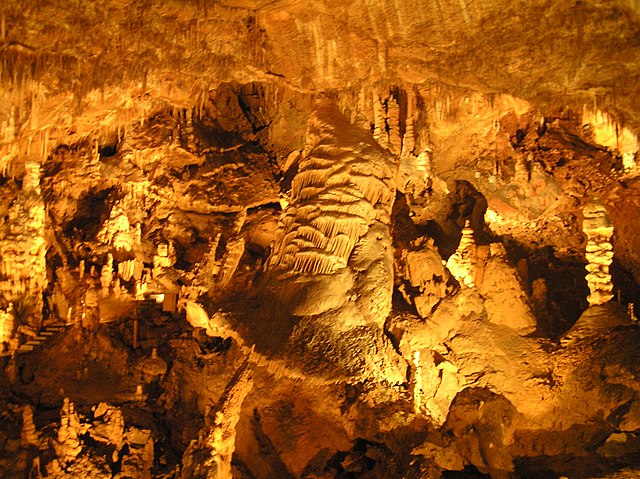National parks in Hungary – Aggtelek
This is an old post. Information may be outdated.

Breaking free from the monotony of everyday life, yearning for the silence of nature and the secrets of the Earth’s depths, it is worth heading towards Northern Hungary, to the captivating world of the Aggtelek National Park. This unique landscape, designated a UNESCO World Heritage Site, is not only famous for its caves but also for the unique wildlife and cultural heritage of its surface karst region. A three-day excursion offers the opportunity to discover this magical area, where a special adventure awaits the traveler from the very first moment.
The journey from Budapest is comfortable, the landscape gradually changes, the noise of the city giving way to the sight of rolling hills and verdant forests. As one approaches Aggtelek, the characteristic formations of the karst region begin to unfold: rocky hillsides, sinkholes, and the mysterious promise of caves hidden beneath the surface.
The first day should be spent in Aggtelek, the namesake village of the national park. Strolling through the charming streets of the village, one can feel the tranquility of the countryside and the hospitality of the locals. At the entrance of the Baradla Cave, the exploration of the Earth’s depths eagerly awaits visitors. The cave system, stretching across Hungary and Slovakia, is one of Europe’s most impressive karst phenomena. During the guided tour, the dazzling world of stalactites and stalagmites is breathtaking: the stalagmites reaching upwards, the stalactites hanging from the ceiling, and the dripstone columns connecting them all take on fantastic shapes thanks to the cave’s lighting. The vast halls, such as the Concert Hall, where acoustic concerts are also held, or the Colossus Column, which rises to a height of more than 20 meters, offer a breathtaking sight. The cool, humid air of the cave creates a special atmosphere, and the silence of the Earth’s depths almost enchants the visitor.
After the cave tour, upon returning to the surface, it is advisable to gather information about further sights and hiking trails at the national park’s information center. The rest of the day can be spent with a pleasant walk in the Baradla Valley. The valley is bordered by rock walls, and walking along the stream, one can admire the karst springs and the diverse vegetation. In the evening hours, it is worth tasting the local specialties in one of the village’s cozy restaurants while discussing the day’s experiences.
The second day should be dedicated to exploring the surroundings of Jósvafő. This picturesque settlement is famous for its Hucul stud farm and the surrounding natural beauty. In the morning, it is worth visiting the stud farm, where one can admire the freely grazing, powerful Hucul horses. The sight of these animals perfectly fitting into the landscape provides a truly special experience.
Afterwards, one can embark on a hike to the Rákóczi Cave. This cave is less visited compared to others but is all the more special for it. The aragonite crystals found in the cave offer a unique sight, the needle-like formations almost sparkling in the light. The narrower passages of the cave provide a more adventurous experience than the spacious halls of Baradla.
The afternoon should be spent discovering the karst phenomena around Jósvafő. The Kossuth Cave, whose entrance is hidden at the foot of a huge rock face, can be visited. Although part of the cave is only accessible to speleologists, the entrance area is also impressive. Following this, a longer walk can be taken in the Hucul Valley, enjoying the murmur of the stream and the silence of the surrounding forests. The untouched nature and tranquility of the landscape offer true rejuvenation. In the evening hours, it is advisable to stay in one of the guesthouses in Jósvafő, where one can admire the starry sky from the terrace.
On the third day, it is worth targeting the more distant parts of the national park. In the morning, one can visit Gömörszőlős, located on the Slovakian side. This small village is a gem of traditional Palóc architecture, the old peasant houses and the landscape forming a harmonious unity. Strolling through the streets of the village, one is transported back in time, admiring the carefully preserved buildings and the relics of folk culture.
The road can then lead to the ruins of Derenk. Derenk was once a thriving village that was evacuated after World War II. The tragic fate of the settlement, now visible only in its ruins, deeply touches the visitor. The remaining church tower and the foundations of the former houses silently tell the story of the village’s past. The place is a sad but also thought-provoking reminder of the turbulent times of history.
As the last program of the day, it is worth visiting the ruins of Szádvár Castle. The castle, perched on a hilltop, was once an important strategic point, but today only its imposing ruins remain. The panorama from the castle ruins overlooking the surrounding karst region is breathtaking. In the distance, the mountains turn blue, and in the valleys, the houses of the villages gleam in the sunlight. The rustling of the wind and the chirping of birds accompany the visitor among the castle walls, while one can imagine the knights and damsels of old times.
The time spent in the Aggtelek National Park enriches the traveler with unforgettable experiences. The wonderful caves of the Earth’s depths, the unique natural values of the surface karst region, and the cultural heritage of the area are captivating. This landscape not only provides beautiful sights for the eyes but also offers peace and rejuvenation for the soul. The mysterious silence of the caves, the fresh scent of the forests, and the untouched nature of the landscape create a harmony that almost merges one with nature. The Aggtelek National Park is a place worth returning to in order to relive the magic of the journey made through the Earth’s depths and the wonders of the surface.